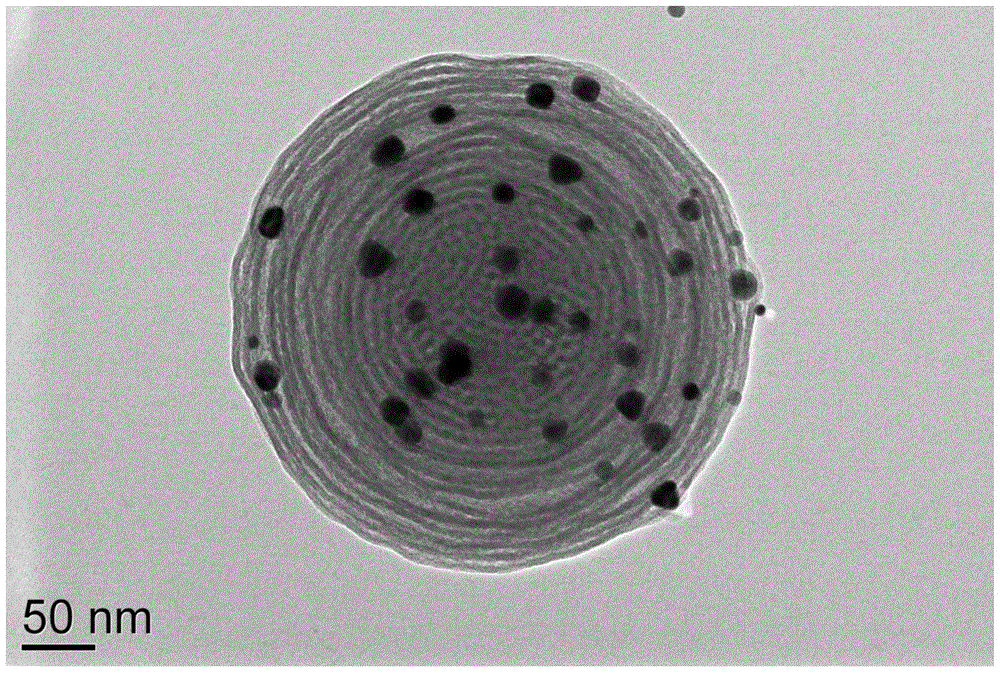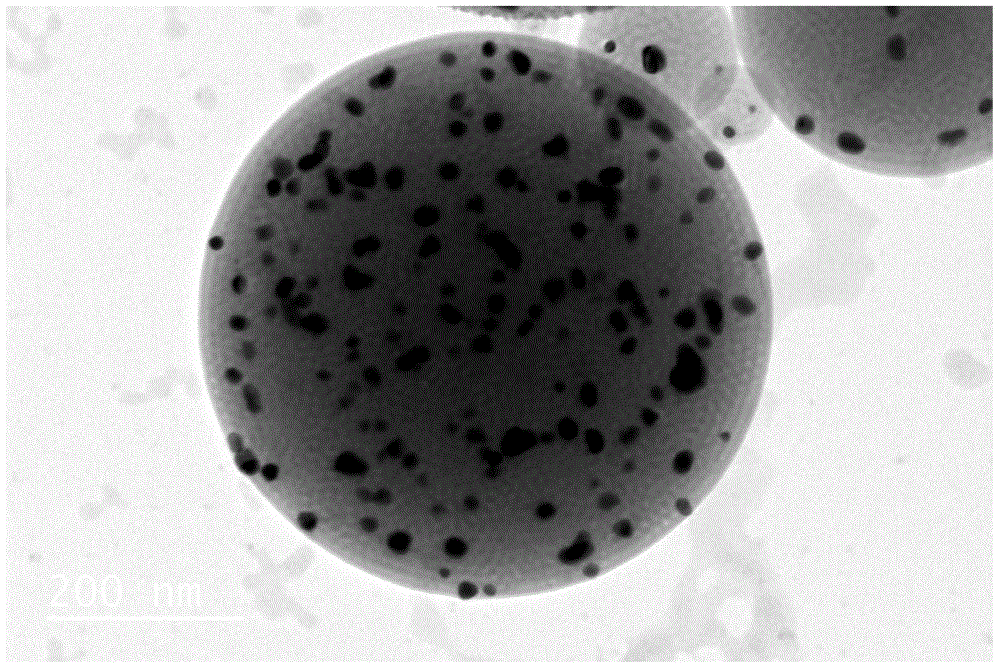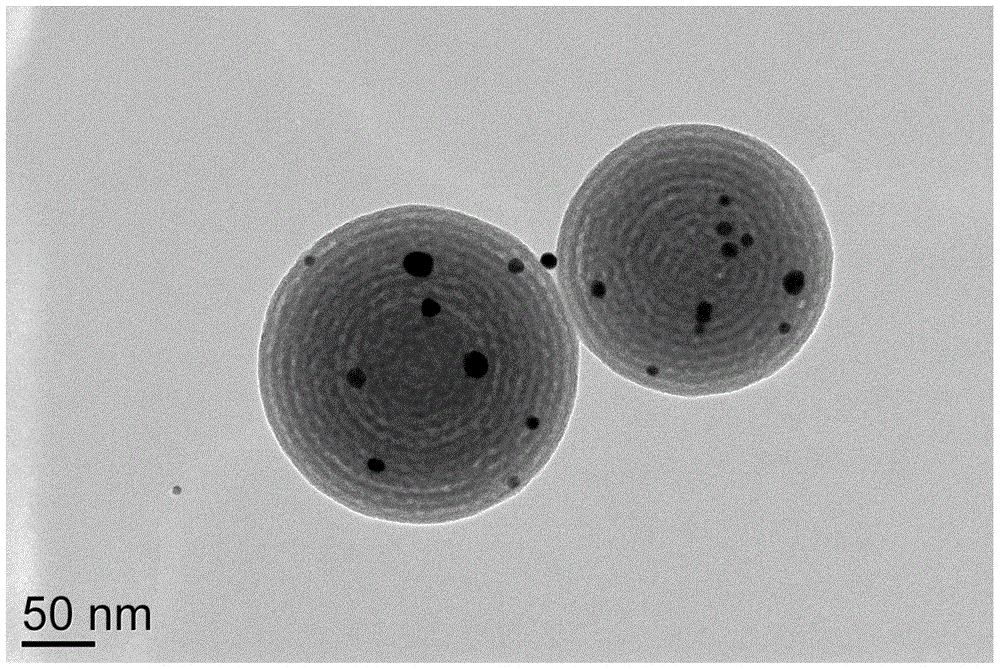Method for preparing silicon oxide/gold microsphere with surface enhanced Raman scattering effect and application thereof
A technology for surface-enhanced Raman and scattering effects, applied in the fields of material science and analytical chemistry, can solve the problems of inability to large-scale and continuous production, complicated preparation process, low production efficiency, etc., and achieve low price of instruments and equipment, and simple and easy-to-obtain raw materials. , the effect of high production efficiency
- Summary
- Abstract
- Description
- Claims
- Application Information
AI Technical Summary
Problems solved by technology
Method used
Image
Examples
Embodiment 1
[0042] Tetraethyl Tetrasilicate, Chlorauric Acid, Surfactant Pluronic @ P123, hydrochloric acid, ethanol, and deionized water were mixed at a molar ratio of 1:0.03:0.0096:0.004:22:5 to form a precursor solution. After the above mixed solution is atomized, it is carried by nitrogen gas into a high-temperature tube furnace at a temperature of 400 degrees, and after a pyrolysis reaction, a silicon oxide / gold composite is obtained, wherein the particle size of gold nanoparticles is 5-30nm. After calcining the microspheres at 400°C for 4 hours, silicon oxide / gold microspheres with a layered mesoporous structure were obtained. figure 1 TEM image of the product.
Embodiment 2
[0044] Tetraethyl Tetrasilicate, Chlorauric Acid, Surfactant Pluronic @ Mix F127, hydrochloric acid, ethanol, and deionized water at a molar ratio of 1:0.03:0.0047:0.004:22:5 to form a precursor solution. After the above mixed solution is atomized, it is carried by nitrogen gas into a high-temperature tube furnace at a temperature of 450 degrees, and after a pyrolysis reaction, a silicon oxide / gold composite is obtained, wherein the particle size of gold nanoparticles is 5-30nm. After calcining the microspheres at 450°C / 4 hours, silicon oxide / gold microspheres with a hexagonal stacked mesoporous structure are obtained, such as figure 2 Shown is a TEM image of silica / gold microspheres.
Embodiment 3
[0046] Synthetic steps are as above-mentioned embodiment one, difference is that the ratio of each reactant is tetraethyl orthotetrasilicate, chloroauric acid, surfactant Pluronic @ P123, hydrochloric acid, ethanol, and deionized water were mixed at a molar ratio of 1:0.01:0.19:0.004:22:8 to form a precursor solution. image 3 TEM image of the product.
PUM
| Property | Measurement | Unit |
|---|---|---|
| particle diameter | aaaaa | aaaaa |
| particle diameter | aaaaa | aaaaa |
| mesopore | aaaaa | aaaaa |
Abstract
Description
Claims
Application Information
 Login to View More
Login to View More - R&D Engineer
- R&D Manager
- IP Professional
- Industry Leading Data Capabilities
- Powerful AI technology
- Patent DNA Extraction
Browse by: Latest US Patents, China's latest patents, Technical Efficacy Thesaurus, Application Domain, Technology Topic, Popular Technical Reports.
© 2024 PatSnap. All rights reserved.Legal|Privacy policy|Modern Slavery Act Transparency Statement|Sitemap|About US| Contact US: help@patsnap.com










